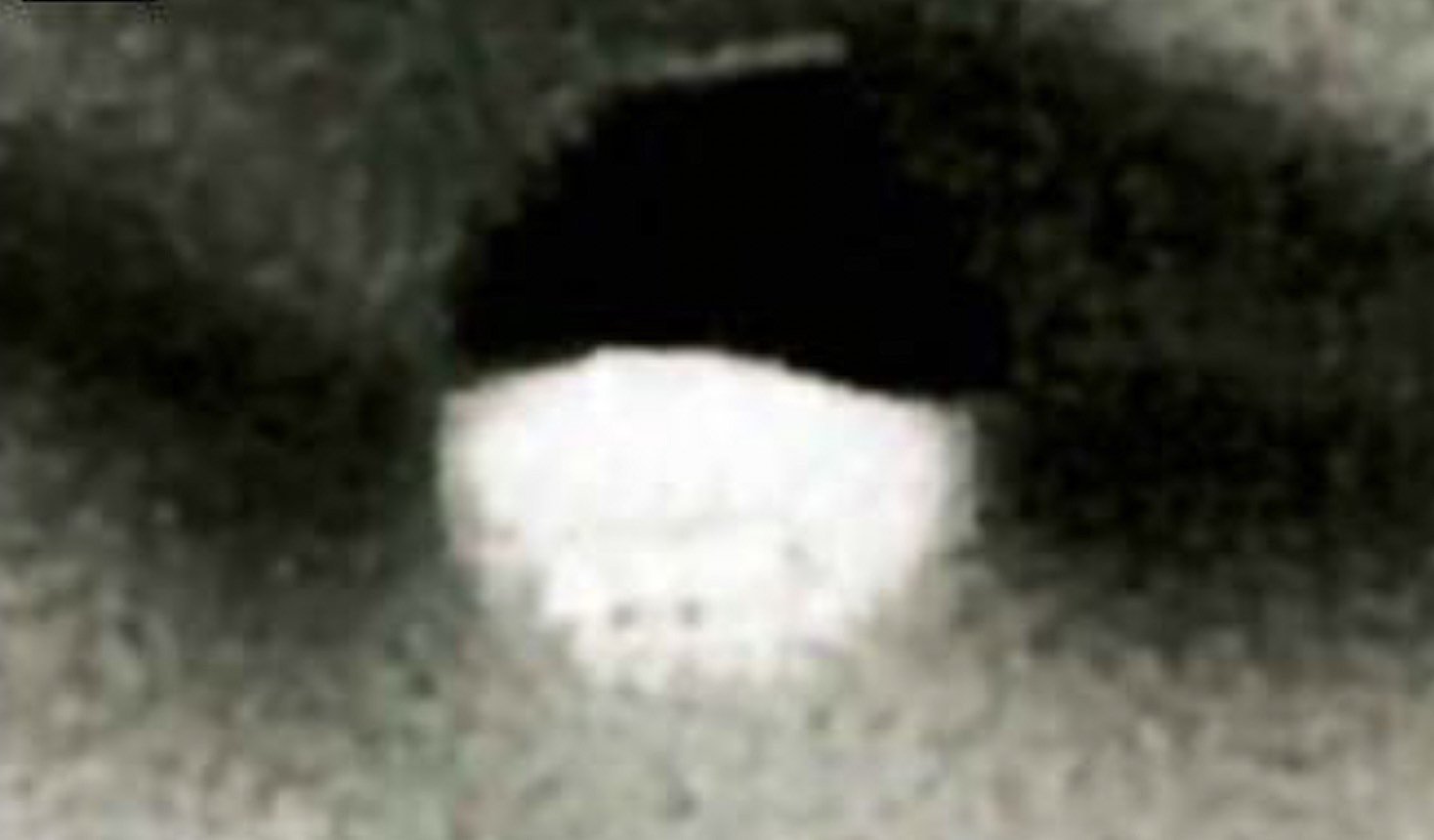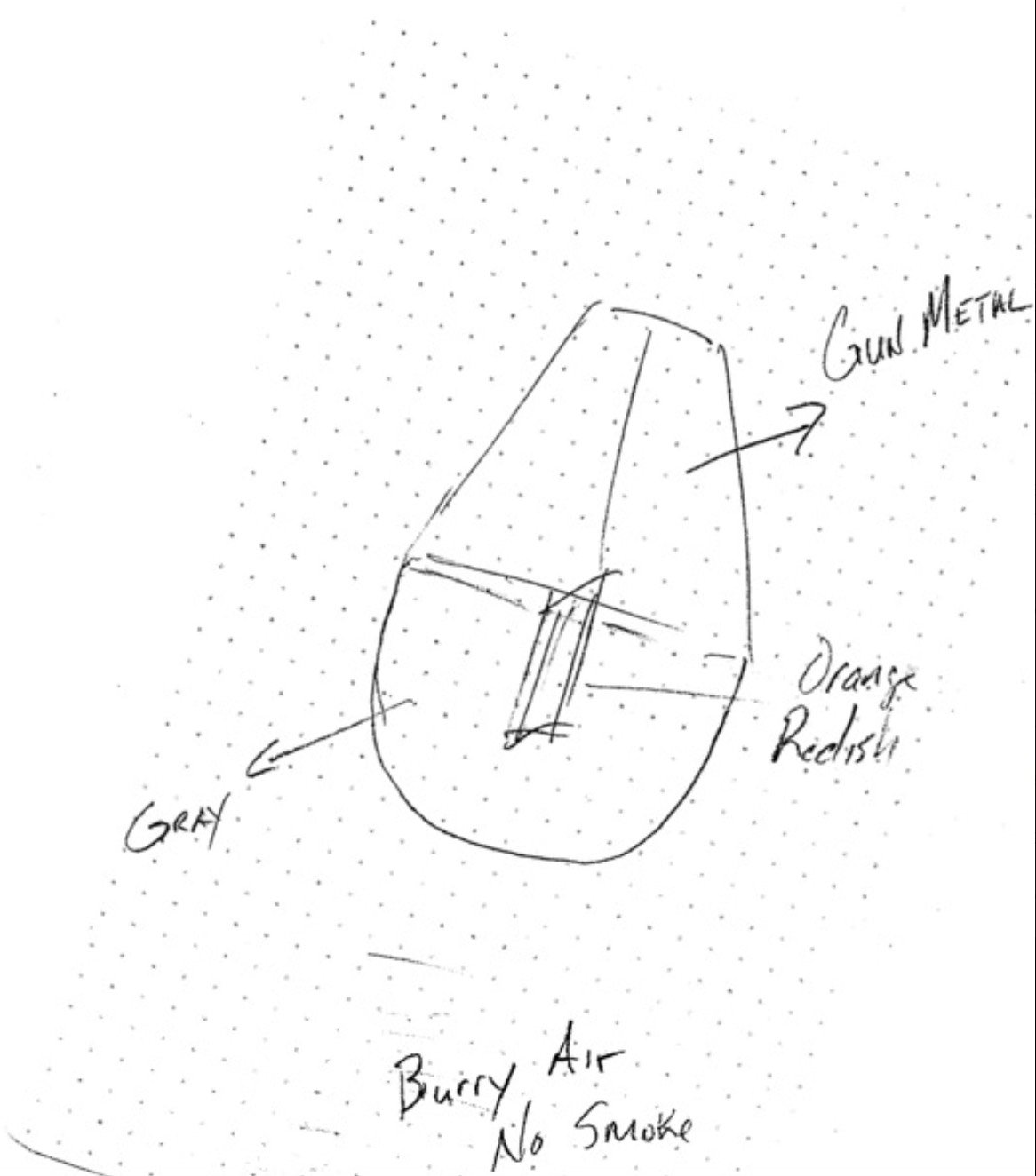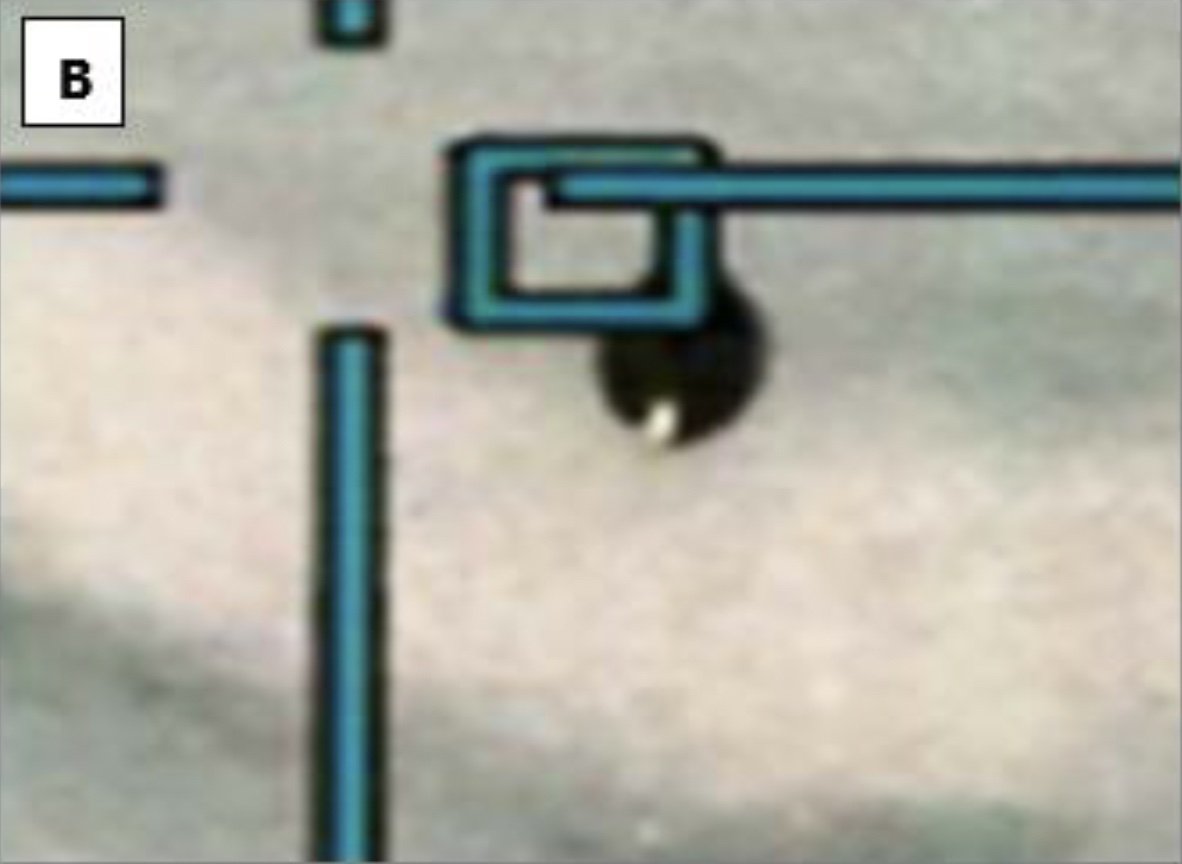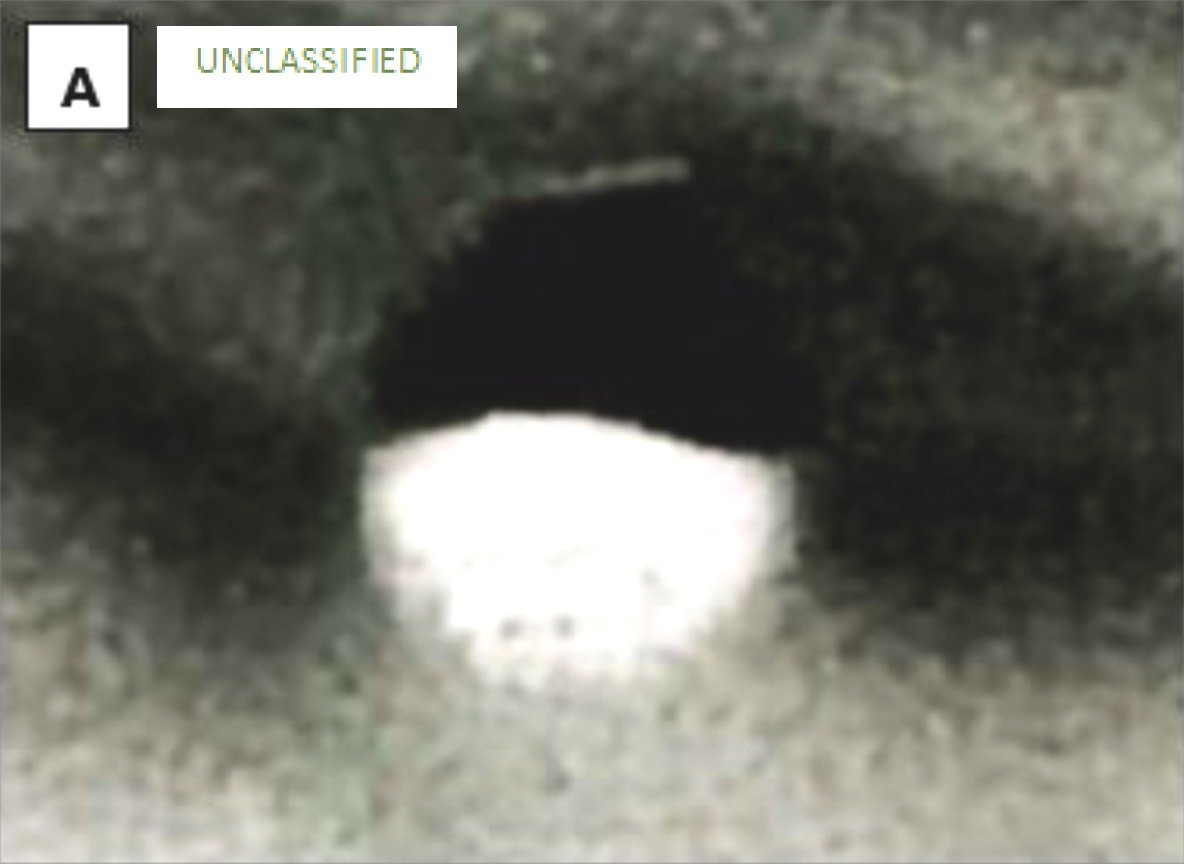

Welcome to this week’s Intelligence Brief… earlier this week, the Pentagon’s All-domain Anomaly Resolution Office released a report on its findings involving a UAP sighting reported by a military pilot near Eglin Air Force Base in January 2023. In our analysis, we’ll look at 1) background details on the UAP incident, and events leading up to the publication of AARO’s new report, 2) what AARO determined, and its conclusions about the purported UAP, 3) problems with AARO’s analysis, and 4) what both pro-UAP and skeptical experts have said about AARO’s findings.
Quote of the Week
“AARO has moderate confidence in this assessment due to the limited data provided.”
– Official AARO Report on “Eglin UAP”, 14 October 2023
Latest News: Recently at The Debrief, we took a deep dive into whether TikTok is really a national security threat, and how the iconic Voyager 1 finally phoned home from 15 billion miles away after months of radio silence. You can find all of our recent stories at the end of this week’s newsletter.
Podcasts: In podcasts this week, over on The Debrief Weekly Report MJ Banias and guest co-host Amy Shira Teitel discuss hypersonic missiles, lost cosmonauts, and the secret Soviet base Compound 19. Meanwhile, on The Micah Hanks Program, we’re joined by R&D scientist Robert Powell for a discussion on the investigation of aerial mysteries. You can subscribe to all The Debrief’s podcasts on our Podcasts Page.
Video News: On the latest episode of Rebelliously Curious, Chrissy Newton is joined by Kevin Lausten, President of Morpheus Space, to discuss the modern-day space race, space defense, space mobility, and Morpheus Space’s latest achievement, the GO-2. You can check out this interview and other great content from The Debrief on our official YouTube Channel.
With that all behind us, it’s time we shift our attention over to the latest findings released by the DoD’s All-domain Anomaly Resolution Office, and why they have once again left the public questioning the efficacy of the Pentagon’s official UFO investigations.
Case Resolved: AARO Releases Its Latest Findings
On Wednesday, the Pentagon’s All-domain Anomaly Resolution Office (AARO) released the results of its investigation into a UAP incident involving four unidentified flying objects encountered by a military pilot near Eglin Air Force Base last year.
The incident, which reportedly occurred in January 2023, was first brought to widespread public attention by Florida Representative Matt Gaetz, who spoke about the incident publicly during a Congressional Hearing last summer.
“We were initially denied access to images, radar, and conversation with all members of the flight crew,” Gaetz said at the time, although eventually he was allowed to speak to the pilot who obtained images Gaetz was later shown which he characterized as “a UAP that I am not able to attach to any human capability, either from the United States or from any of our adversaries.”
Earlier this year, additional confirmation of the incident came to light through a response to a Freedom of Information Act request, which led to the release of drawings of the object based on the pilot’s description.


Now, for the first time, infrared and electro-optical images obtained by the pilot during the aerial encounter have been made available as part of a report published at AARO’s website, along with the Pentagon UFO investigative group’s official determination about what they think the object may have been.
AARO’s Official Report on the Eglin Incident
“On 26 January 2023, a military pilot reported four potential unidentified anomalous phenomena (UAP) while operating in the Eglin Air Force Base training range off the coast of Florida,” an official report published at AARO’s website this week states of the 2023 incident.
“Through the onboard radar system, the pilot initially observed that the four objects were aloft between 16,000 – 18,000 feet and appeared to be flying in formation,” the report states, although noting that “the pilot observed only one of the four objects visually and captured two images of the single object via the aircraft’s electro-optical/infrared (EO/IR) sensor,” and that the pilot was unable to record video of the event because the “the aircraft’s video recording equipment was inoperable prior to and during the aircraft’s flight.”


Based on the imagery and description of the object and its behavior provided by the pilot, AARO investigators concluded that the UAP “very likely was an ordinary object and was not exhibiting anomalous or exceptional characteristics or flight behaviors,” although conceding that it only had “moderate confidence in this assessment due to the limited data provided.”
So what do AARO investigators think the object had probably been? “AARO assesses the object was a lighter-than-air (LTA) object,” the report states, “such as a large form-factor balloon; a meteorological balloon; a large Mylar balloon; or a large, commercial, outdoor, helium-filled, lighting balloon.”
“Moderate Confidence” and More Questions
Despite AARO’s “moderate confidence” in its identification, the report goes on to note that AARO’s Intelligence Community (IC) and Science and Technology (S&T) partners both expressed “high confidence” that the object “was not anomalous and very likely was some kind of balloon.”
Following the tried-and-true principle of Occam’s razor, one might assume that the balloon theory is indeed the simplest and, therefore, perhaps the best potential explanation in this instance. However, AARO’s self-asserted “moderate confidence” about this conclusion does seem to suggest its investigators maintained some uncertainty which, in fact, also seems highly warranted given several facts the AARO investigation fails to explain.
In his original report, the pilot stated that he had initially observed four objects on his radar before the system began to malfunction as he approached within 4000 feet of the nearest object (AARO found that the radar’s malfunction had been due to a circuit breaker that had tripped, and that engineers confirmed that this had previously occurred several times on this same aircraft; thus they did not link the malfunction to the presence of the object or any anomalous capabilities it displayed).
Although the balloon explanation could potentially make sense for a single object, what is the likelihood that there had been four of these escaped commercial balloons, all of which had seemingly maintained a diamond-shaped formation before the nearest object, under observation by the pilot, “descended into the cloud deck”? Notably, AARO’s investigators did not dispute the presence of the other three objects, probably because the radar had successfully recorded its detection of them prior to going offline.
However, while AARO offers a potential explanation for the radar malfunction, it remains unclear why the video recording capabilities on board the aircraft had been “inoperable prior to and during the aircraft’s flight.” Was there any determination about why the video systems had been deemed inoperable before the training operation in which the UAPs were observed? If so (and regardless of whether this is in any way associated with the object the pilot observed), one must wonder why an advanced fighter aircraft would be engaging in training exercises with both a disabled camera system and a faulty circuit breaker known to have tripped previously on several occasions, thereby disabling the aircraft’s radar.
Experts Remain Doubtful
There is at least one thing that AARO’s recent report and its “escaped commercial lighting balloon” theory does help to explain. Shortly after his departure as Director of AARO, Dr. Sean Kirkpatrick came forward with statements in a series of OpEds and interviews, one of which was conducted by CNN’s Peter Bergen, in which Kirkpatrick made references to such balloons escaping and causing UAP sightings. It seems fairly evident, based on the report released by AARO this week, that the Eglin case had been the instance Kirkpatrick had been referring to. Additionally, AARO’s report on the incident, dated October 14, 2023, would have been completed prior to Kirkpatrick’s departure as Director of AARO.


However, several commentators have expressed skepticism about AARO’s conclusions. In a posting on X, Marik von Rennenkampff, a former analyst with the U.S. Department of State’s Bureau of International Security and Nonproliferation, noted that he contacted the balloon company believed to have been the provider referenced by Kirkpatrick in interviews earlier this year, which said it had not lost any of its inflatable devices.
“I called the Florida-based company that makes these high-end industrial products,” von Rennenkampff wrote. “They told me their balloons do not come untethered randomly.”
Along similar lines, writer and investigator Mick West also expressed doubts about the lighting balloon hypothesis in a posting on X.
“This Eglin UFO looks like a white sphere wearing a hat,” West wrote, offering a pair of comparison images depicting the newly released infrared image of the object obtained by the pilot, which appears to be consistent with his description of the upper portion of the object resembling “a rounded, three-dimensional cone shape, similar to the shape of the ‘Apollo spacecraft’,” as described in AARO’s new report.
“The image on the left is the IR thermal image, adjusted the levels only,” West wrote in his X posting that accompanied the image comparison. “It shows a quite irregular ‘hat,’ which is not really consistent with the lighting balloon hypothesis.”


In summary, it seems clear why AARO only has “moderate confidence” in its explanation of the Eglin incident. In attempting to explain only the single object for which imagery was obtained, AARO fails to account for how four of the objects—all detected on radar and in a diamond formation—could similarly be explained by the “escaped lighting balloon” hypothesis. Further, this characterization appears to be inconsistent with what the imagery provided to AARO investigators by the pilot shows; images that, by contrast, seem to be a good match for the pilot’s description of the object based on memory, and on sketches he provided.
Thus, it’s no wonder that feedback appearing online about the new report—both from UAP proponents and from skeptics—has cast serious doubts on AARO’s conclusions. While expressing only “moderate confidence” in their findings and failing to account for several lingering questions about the 2023 Eglin case, that didn’t seem to prevent AARO from proceding with labeling the case as “Resolved” and clearing it for open publication… making it only the latest in a series of recent gaffes that do little to inspire public confidence in the Pentagon’s official UAP investigative office.
That concludes this week’s installment of The Intelligence Brief. You can read past editions of The Intelligence Brief at our website, or if you found this installment online, don’t forget to subscribe and get future email editions from us here. Also, if you have a tip or other information you’d like to send along directly to me, you can email me at micah [@] thedebrief [dot] org, or Tweet at me @MicahHanks.


Here are the top stories we’re covering right now…
- The New Director of GEIPAN, France’s Official UAP Investigative Office, Discusses Science and the Study of Aerial Mysteries
In an exclusive interview, The Debrief sits down with Frédéric Courtade, the new chief of France’s official government UAP investigative office GEIPAN.
- 3.7 Billion Years Ago, the Earth’s Magnetic Field Played A Vital Role in the Evolution of Life
3.7 billion years ago, Earth’s magnetic field helped life thrive, and new evidence says it was much stronger than we originally thought.
- Company Claims Its ‘Directed Evolution’ Microbiome-Enhanced Plants Literally Eat Pollution for Breakfast
Scientists from Neoplants say their ‘directed evolution’ microbiome plant filtration system cleans the air as well as 30 ordinary plants.
- Something is Affecting Gravity in our Solar System, and Astronomers Say It Could Be an Unknown Planet
Scientists believe they may be closing in on a mysterious, unseen “Planet 9” that could be lurking in our solar system.
- Dentist Makes an Unsettling Discovery in the Floor of His Parents’ Newly Renovated Home
An unsettling discovery in a renovated home reveals how evidence of the ancient past may quite literally be hidden right under our noses.
- Is TikTok Really a National Security Threat? Why U.S. Lawmakers Are Pushing to Ban the Popular Social Media App
Is the popular TikTok app really a Trojan horse for Chinese surveillance? Here’s why U.S. lawmakers are pushing to ban TikTok amid espionage fears.
- Voyager 1 Spacecraft Resumes Communication Thanks to Ingenious Engineering Hack Performed from 15 Billion Miles Away
After five months of silence, NASA engineers have successfully received communications from the iconic Voyager 1 spacecraft, allowing them to perform a health and status checkup on the most distant human-built object in the cosmos.
- Microgravity Environment Can Disturb Sleep Rhythms of Astronauts, New Study Says
New research suggests astronauts may have a hard time getting a good night’s sleep while in a microgravity environment.
- Astronomers Reveal an ‘Active Moon’ May be Hiding in Orbit Near This Recent James Webb Space Telescope Discovery
Emissions from a brown dwarf detected by the James Webb Space Telescope could point to the existence of a volcanically active moon in its orbit.
- Biochar is the Natural Charcoal Product that Could Revolutionize Tomorrow’s Cities
Biochar is emerging as a powerful tool that has the potential to transform urban areas into greener spaces.
- Mapping Cosmic Hydrogen: From the Big Bang to Cosmic Reionization
Harvard astronomer Avi Loeb discusses the reionization of the Universe following the Big Bang, and methods of mapping cosmic hydrogen.
- NASA Veteran’s Propellantless Propulsion Drive That Physics Says Shouldn’t Work Just Produced Enough Thrust to Overcome Earth’s Gravity
A veteran NASA scientist says his company has tested a propellantless propulsion drive technology that produced one Earth gravity of thrust.
- New Three-Dimensional Map of the Universe Charts 11 Billion Years of Cosmic Expansion
An international team of collaborators has created a new three-dimensional map of the universe, providing the most detailed view of the cosmos yet seen and charting its expansion over 11 billion years.
- 41,000 Years Ago, a Rare, Extreme Event Allowed an Onslaught of Cosmic Rays Through Earth’s Magnetic Field
New research reveals how cosmic rays bombarded the Earth 41,000 years ago as its magnetic field temporarily weakened.
- Leaked Document Reveals Russia’s Latest Efforts to Weaken the West
This week we examine a newly leaked secret document outlining Russia’s aims to wage a campaign aimed at weakening the U.S. and other western nations.
- The Modern Space Race
Kevin Lausten, President of Morpheus Space, discusses the modern-day space race, space defense, and space mobility.
- Broken AARO: The Mellon Report, UAP, and Area 51
This week on The Micah Hanks Program, we analyze Christopher Mellon’s response to the recent AARO historical report, along with several intriguing revelations it contains.
- Experiments with Bilayer Graphene Reveal ‘Massless’ Movement of Electrons, Similar to Light
New experiments confirm that electrons travel through naturally occurring bilayer graphene much like light, without mass.
- DARPA’s Groundbreaking “ACE” Program and X-62A Becomes First AI-Controlled Jet to Dogfight Against Manned F-16 in Real-World
DARPA’s ACE program achieves a milestone with the first AI jet to successfully engage in a real-world dogfight against a manned F-16.
